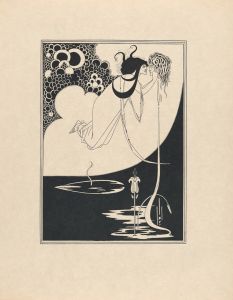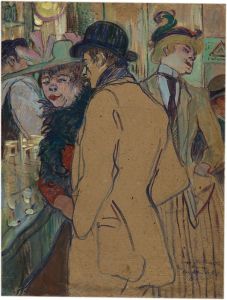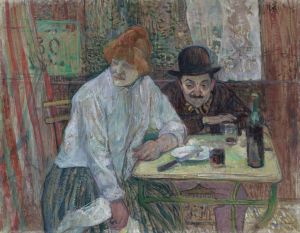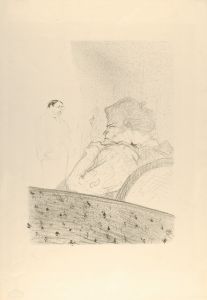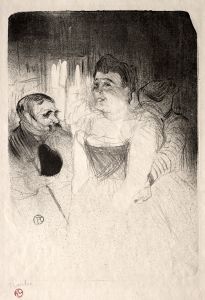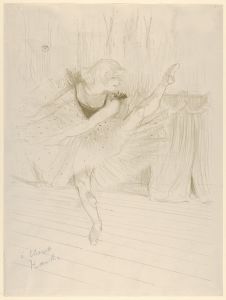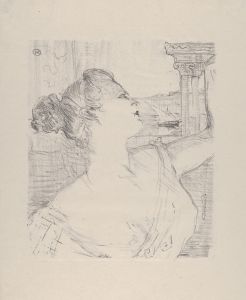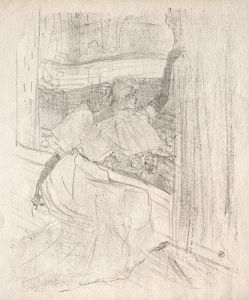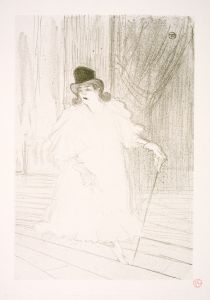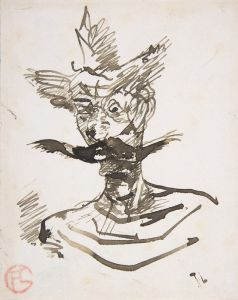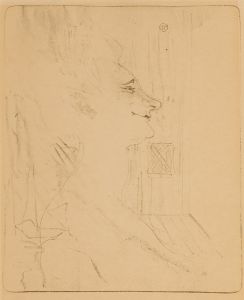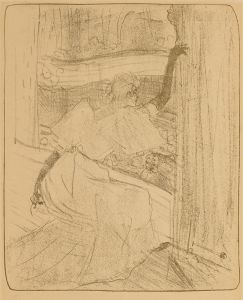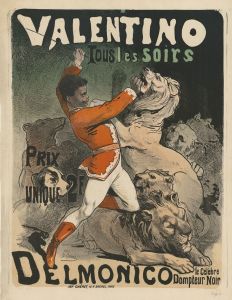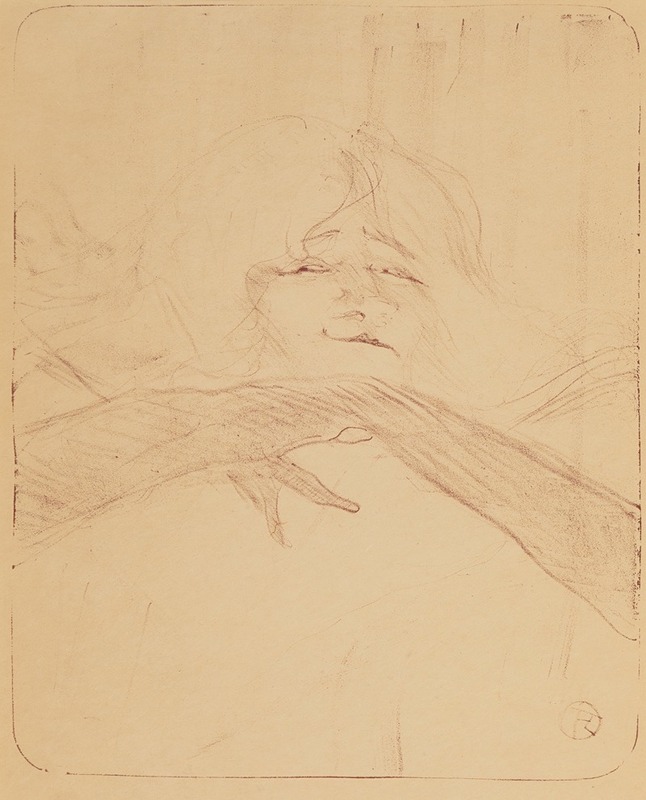
Yvette Guilbert pl 8
A hand-painted replica of Henri de Toulouse-Lautrec’s masterpiece Yvette Guilbert pl 8, meticulously crafted by professional artists to capture the true essence of the original. Each piece is created with museum-quality canvas and rare mineral pigments, carefully painted by experienced artists with delicate brushstrokes and rich, layered colors to perfectly recreate the texture of the original artwork. Unlike machine-printed reproductions, this hand-painted version brings the painting to life, infused with the artist’s emotions and skill in every stroke. Whether for personal collection or home decoration, it instantly elevates the artistic atmosphere of any space.
Henri de Toulouse-Lautrec, a prominent French painter and illustrator, is renowned for his depictions of Parisian nightlife in the late 19th century. Among his subjects was Yvette Guilbert, a celebrated cabaret singer and actress of the era. Toulouse-Lautrec's work, "Yvette Guilbert pl 8," is part of a series of illustrations that capture the essence of Guilbert's performances and persona.
Yvette Guilbert was born in 1865 in Paris and became a significant figure in the world of French cabaret. Known for her distinctive style, which included long black gloves and a unique way of delivering songs that combined humor and melancholy, Guilbert captivated audiences across Europe. Her performances often included monologues and songs that highlighted the complexities of human emotions, making her a favorite subject for artists like Toulouse-Lautrec.
Toulouse-Lautrec met Guilbert in the 1890s, a period when he was deeply immersed in the bohemian culture of Montmartre, a district in Paris known for its vibrant nightlife and artistic community. Lautrec was fascinated by the performers of the cabarets and music halls, and Guilbert, with her striking presence and expressive performances, became one of his muses.
The "Yvette Guilbert pl 8" is part of a series of lithographs that Toulouse-Lautrec created, capturing Guilbert's dynamic stage presence. These works are characterized by Lautrec's distinctive style, which combines bold outlines, flat areas of color, and an emphasis on capturing the movement and emotion of his subjects. In these illustrations, Lautrec often focused on Guilbert's expressive gestures and her signature long gloves, which became an iconic part of her image.
Toulouse-Lautrec's portrayal of Guilbert goes beyond mere representation; it captures the spirit of the performer and the atmosphere of the venues where she performed. His work provides a glimpse into the world of Parisian entertainment at the turn of the century, highlighting the interplay between performer and audience. Lautrec's ability to convey the essence of his subjects with minimal detail is evident in these lithographs, where he uses simple lines and colors to evoke the energy and emotion of Guilbert's performances.
The collaboration between Guilbert and Toulouse-Lautrec was mutually beneficial. While Guilbert gained a lasting visual legacy through Lautrec's art, the artist himself found in her a subject that perfectly suited his interest in the theatrical and the expressive. Their professional relationship is a testament to the vibrant cultural exchange that characterized the Parisian art scene during this period.
Today, Toulouse-Lautrec's depictions of Yvette Guilbert are celebrated for their artistic merit and historical significance. They offer insight into the world of late 19th-century Paris, a time when the city was a hub of artistic innovation and cultural transformation. These works remain an important part of Toulouse-Lautrec's oeuvre, showcasing his talent for capturing the essence of the performers who defined an era.





